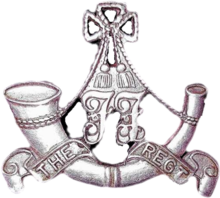
The 4th Indian Infantry Division, also known as the Red Eagle Division, is an infantry division of the Indian Army. This division of the British Indian Army was formed in Egypt in 1939 during the Second World War. During the Second World War, it took part in campaigns in East Africa, Syria, North Africa and Italy. Post independence, the division is part of the I Corps and headquartered at Prayagraj.

The 55th Coke's Rifles (Frontier Force) was a regiment of the British Indian Army. It was raised in 1849 as the 1st Regiment of Punjab Infantry. It was designated as the 55th Coke's Rifles (Frontier Force) in 1903 and became 1st Battalion (Coke's) 13th Frontier Force Rifles in 1922. In 1947, it was allocated to the Pakistan Army, where it continues to exist as 7th Battalion The Frontier Force Regiment.
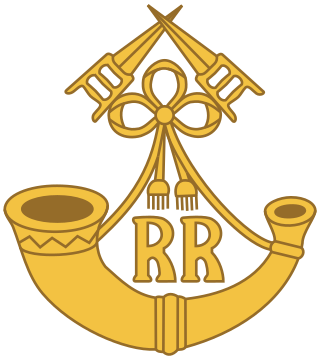
The Rajputana Rifles is the oldest rifle regiment of the Indian Army. It was originally a part of the British Indian Army, when six previously existing regiments were amalgamated to form six battalions of the 6th Rajputana Rifles. In 1945, the numeral designation was dropped from the title and in 1947 the regiment was transferred to the newly independent Indian Army. Since independence, the regiment has been involved in a number of conflicts against Pakistan, as well as contributing to the Custodian Force (India) in Korea under the aegis of the United Nations in 1953–54 and to the UN Mission to the Congo in 1962. As a rifle regiment, it uses a bugle horn as its insignia, the same as the British Light Division, but unlike its British counterparts, the Rajputana Rifles march at the same march pace used in the Indian Army as a whole.
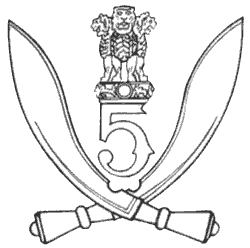
5th Gorkha Rifles, also abbreviated as 5 GR(FF) is an infantry regiment of the Indian Army comprising Gurkha soldiers of Nepalese origin. It was formed in 1858 as part of the British Indian Army. The regiment's battalions served in the First World War (Mesopotamia) and Second World War.
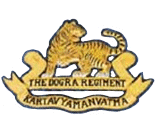
The Dogra Regiment is an infantry regiment of the Indian Army. The regiment traces its roots directly from the 17th Dogra Regiment of the British Indian Army. When transferred to the Indian Army like its sister regiments, the numeral prefix was removed. Units of the Dogra Regiment have fought in all conflicts that independent India has been engaged in, making it one of the most prestigious and most decorated regiments of the Indian Army.
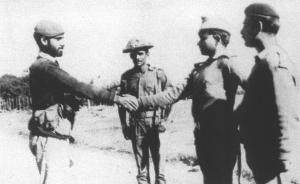
The First and SecondBattles of Hilli were two major battles fought during the Bangladesh Liberation War on 22–24 November and 10–11 December 1971. They are generally regarded as the bloodiest battles of the eastern front of the Indo-Pakistani War of 1971. The first battle saw, according to veterans of the battle, the fiercest fighting of the war, but the second was much tamer.
A viceroy's commissioned officer (VCO) was a senior Indian member of the British Indian Army. VCOs were senior in rank to warrant officers in the British Army, and held a commission issued by the viceroy. Also known as "Indian officers" or "native officers", they had authority only over Indian troops and were subordinate to all British King's commissioned officers, Indian Commissioned Officers (ICO) and King's commissioned Indian officers (KCIO).
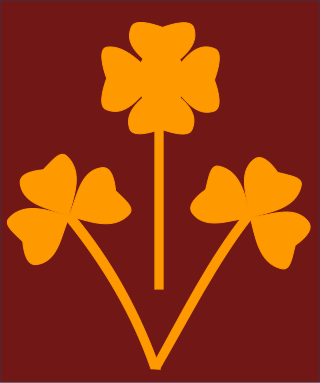
The 8th Mountain Division was raised as the 7th Indian Infantry division of the British Indian Army. It is now part of the Indian Army and specialises in mountain warfare.

The 13th Frontier Force Rifles was part of the British Indian Army, and after 1947, Pakistan Army. It was formed in 1922 by amalgamation of five existing regiments and consisted of five regular battalions. In 1947, it was allocated to the Pakistan Army.
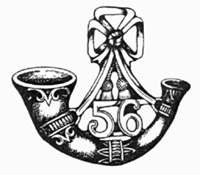
The 56th Punjabi Rifles (Frontier Force) was an infantry regiment of the British Indian Army. It was raised in 1849 as the 2nd Regiment of Punjab Infantry. It was designated as the 56th Punjabi Rifles (Frontier Force) in 1906 and became 2nd Battalion 13th Frontier Force Rifles in 1922. In 1947, it was allocated to the Pakistan Army, where it continues to exist as 8th Battalion The Frontier Force Regiment.

The 4th Punjab Infantry Regiment was an infantry regiment of the British Indian Army formed on 18 April 1849 by Captain GG Denniss at Lahore as part of the Transfrontier Brigade, which became the Punjab Irregular Force (PIF) in 1851. The regiment was designated as the 57th Wilde's Rifles (Frontier Force) in 1903, and 4th Battalion (Wilde's) 13th Frontier Force Rifles in 1922. In 1947, it was allocated to the Pakistan Army, where it continues to exist as 9th Battalion The Frontier Force Regiment.

The 51st Sikhs (Frontier Force) was an infantry regiment of the British Indian Army. It was raised in 1846 as the 1st Regiment of Infantry The Frontier Brigade. It was designated as the 51st Sikhs (Frontier Force) in 1903 and became 1st Battalion (Prince of Wales's Own Sikhs) 12th Frontier Force Regiment in 1922. In 1947, it was allocated to the Pakistan Army, where it continues to exist as 3 Battalion The Frontier Force Regiment.

The 59 Scinde Rifles (Frontier Force) was an infantry regiment of the British Indian Army. It was raised in 1843, as the Scinde Camel Corps. In 1856, it was incorporated into the Punjab Irregular Force (PIF). It was designated as the 59th Scinde Rifles (Frontier Force) in 1904 and became 6th Royal Battalion (Scinde) 13th Frontier Force Rifles in 1922. In 1947, it was allocated to the Pakistan Army, where it continues to exist as 1st Battalion The Frontier Force Regiment.

The 52nd Sikhs (Frontier Force) was an infantry regiment of the British Indian Army. It was raised in 1846 as the 2nd Regiment of Infantry The Frontier Brigade. It was designated as the 52nd Sikhs (Frontier Force) in 1903 and became 2nd Battalion (Sikhs) 12th Frontier Force Regiment in 1922. In 1947, it was allocated to the Pakistan Army, where it continues to exist as 4th Battalion The Frontier Force Regiment.
The 53rd Sikhs (Frontier Force) was an infantry regiment of the British Indian Army. It was raised in 1847 as the 3rd Regiment of Infantry The Frontier Brigade. It was designated as the 53rd Sikhs (Frontier Force) in 1903 and became 3rd Battalion (Sikhs) 12th Frontier Force Regiment in 1922. In 1947, it was allocated to the Pakistan Army, where it continues to exist as 5th Battalion The Frontier Force Regiment.

The 54th Sikhs (Frontier Force) were an infantry regiment of the British Indian Army. It was raised in 1846 as the 4th Regiment of Infantry The Frontier Brigade. It was designated as the 54th Sikhs (Frontier Force) in 1903 and became 4th Battalion (Sikhs) 12th Frontier Force Regiment in 1922. In 1947, it was allocated to the Pakistan Army, where it continues to exist as 6th Battalion The Frontier Force Regiment.

The 58th Vaughan's Rifles (Frontier Force) was an infantry regiment of the British Indian Army. It was raised in 1849 as the 5th Regiment of Punjab Infantry. It was designated as the 58th Vaughan's Rifles (Frontier Force) in 1903 and became 5th Battalion 13th Frontier Force Rifles in 1922. In 1947, it was allocated to the Pakistan Army, where it continues to exist as 10th Battalion The Frontier Force Regiment.
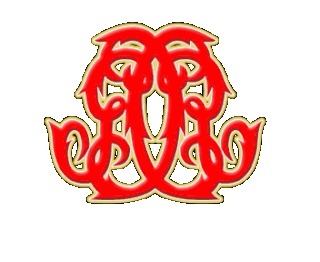
The Guides Infantry, or 2nd Battalion (Guides) The Frontier Force Regiment, is an infantry battalion of the Pakistan Army. It was raised in 1846 as part of the famous Corps of Guides, a highly mobile force to act as guides to troops in the field and gather intelligence beyond the borders of British India. The corps recruited men from various backgrounds, with Pathans, Punjabi Muslims, Sikhs, and Dogras forming the majority of their manpower. Under the leadership of Lieutenant Harry Burnett Lumsden, the Guides gained a formidable reputation and introduced the dust-colored "khaki" uniforms, later adopted by the British Army in India. The corps became part of the Punjab Frontier Force, known as Piffers, which maintained order on the Punjab Frontier for fifty years.
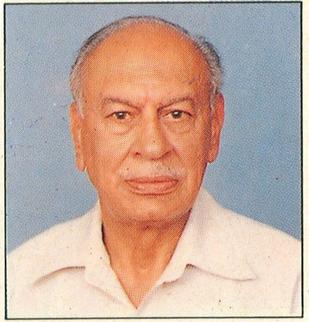
Lieutenant General Agha Ali Ibrahim Akram better known as A. I. Akram was a three-star rank general, military strategist, author, historian, diplomat, and one of Pakistan's most influential soldier-scholars. In the 1980s, Akram was a well-known defence expert and defence analyst. Akram's most popular work was his biography of Khalid ibn al-Walid, The Sword of Allah which Akram published while serving in the Pakistan Army. For several years. it was compulsory reading in the Pakistan Army for admission into the Command and Staff College Quetta and has been on the leadership syllabus in the Malaysian Army. Akram was once seen as a close confidant of Muhammad Zia-ul-Haq and his conceptual adviser.
The New Year Honours 1915 were appointments by King George V to various orders and honours to reward and highlight good works by members of the British Empire. They were announced on 1 January 1915.
